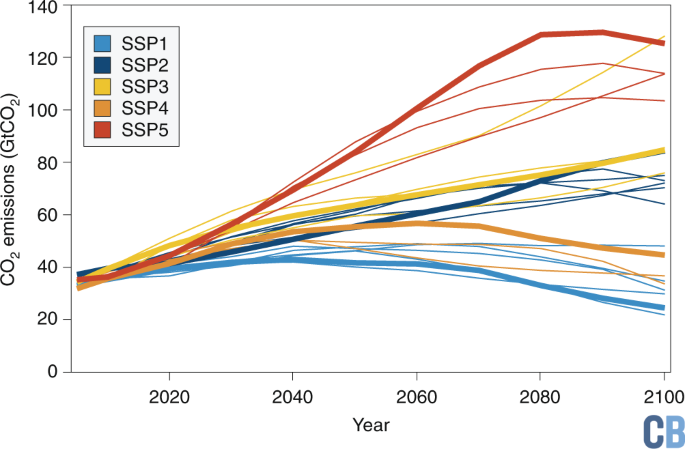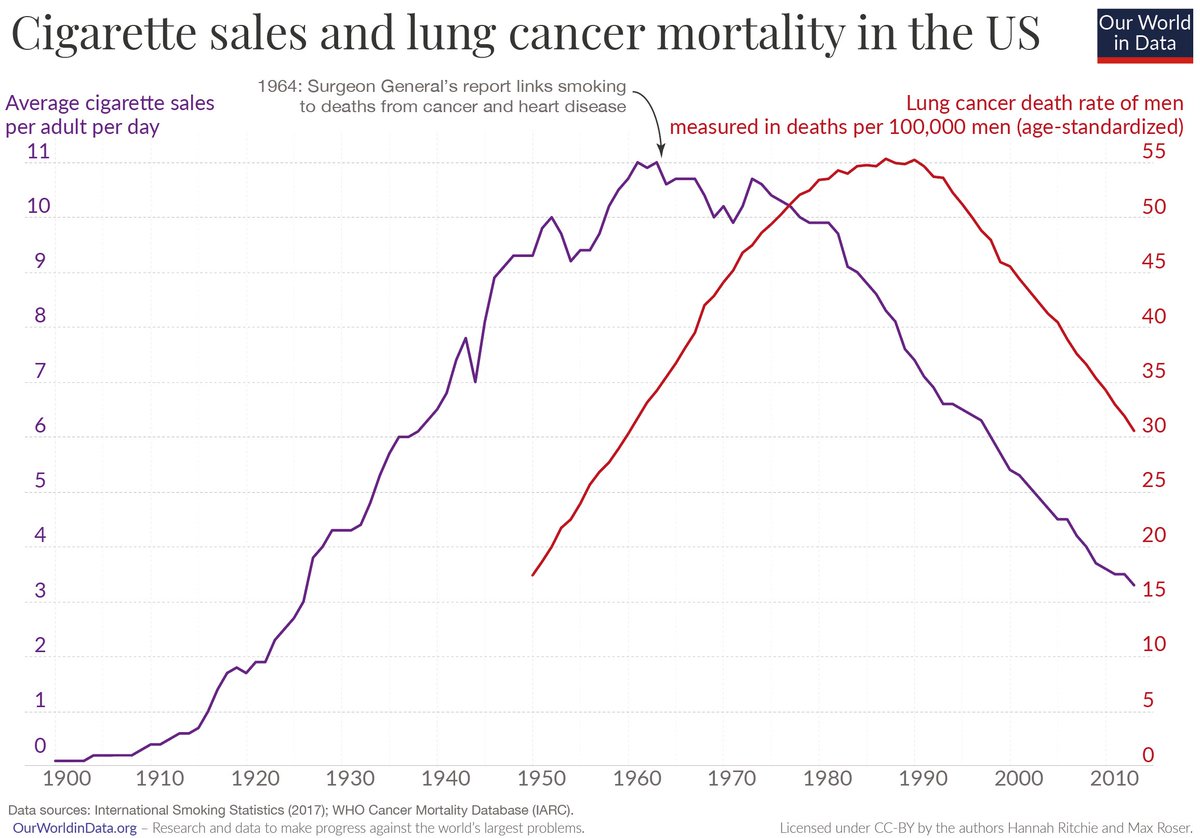
I’ve written a new post about global poverty.
Here is the post: ourworldindata.org/higher-poverty…
👇 Below you find a thread with the main points.
Here is the post: ourworldindata.org/higher-poverty…
👇 Below you find a thread with the main points.
The poverty that dominates the public discussion is the 'International Poverty Line'.
It is used by the UN to measure what they call ‘extreme poverty’ and is the relevant poverty definition for the UN’s goal of ‘ending extreme poverty’ by 2030.
2/n
It is used by the UN to measure what they call ‘extreme poverty’ and is the relevant poverty definition for the UN’s goal of ‘ending extreme poverty’ by 2030.
2/n
This poverty line is drawn by taking the average poverty lines in 15 of the poorest countries in the world.
As a consequence it is extremely low. It is set at $1.90 per day.
3/n
As a consequence it is extremely low. It is set at $1.90 per day.
3/n
But in an extremely unequal and poor world such an extremely low poverty line has a clear purpose: it highlights the fact that every tenth person in the world is extremely poor.
Without this poverty line the world would not be aware of this reality.
4/n
Without this poverty line the world would not be aware of this reality.
4/n
But it clearly also has a large downside. A poverty line that is so very low ignores what is happening to the incomes of the 90% of the world population who live above this extreme poverty threshold.
5/n
5/n
In my post I’m doing what the UN does, but instead of relying on the definitions of poverty in the poorest countries I am relying on the notions of poverty in rich countries. Countries like Denmark, the US, or Germany.
6/n
6/n
I should say that throughout this thread (and the post) all income and poverty measures are adjusted for price differences between countries.
[In the post you find detailed explanations of the relevant poverty and income measures.]
7/n
[In the post you find detailed explanations of the relevant poverty and income measures.]
7/n
To understand how people in richer countries think about poverty I bring together a lot of relevant comparisons: the poverty lines in richer countries – but also the results from surveys, the size of social benefit payments, and the proposals for 'Universal Basic Incomes'.
8/n
8/n

All of these comparisons span a wide range – from about int.-$25 to int.-$50 per day.
As a poverty line based on these comparisons I rely on an income of int.-$30 per day.
9/n
As a poverty line based on these comparisons I rely on an income of int.-$30 per day.
9/n
Now what does the world look like relative to this poverty threshold?
10/n
10/n
Here you see the distribution across world regions.
In high-income countries the majority of the population does not live in poverty, but even there a significant share does live in poverty as we know.
In poorer countries the share in poverty is very high. Above 85%.
11/n
In high-income countries the majority of the population does not live in poverty, but even there a significant share does live in poverty as we know.
In poorer countries the share in poverty is very high. Above 85%.
11/n

Those countries in which few are living in poverty are countries that are relatively equal, and which importantly have a high average income – like Denmark, for which you see the data here.
12/n
12/n

In the past all countries were extremely poor: ourworldindata.org/extreme-histor…
You saw it in the last tweet – the average income in Denmark was very low in the past, but has increased steadily for the last two centuries. This long-term development is called economic growth.
13/n
You saw it in the last tweet – the average income in Denmark was very low in the past, but has increased steadily for the last two centuries. This long-term development is called economic growth.
13/n
Places in which the majority of people are poor today are those where the average income is low.
This is an important insight from economics: people are not poor because of who they are, but because of *where* they are.
14/n
This is an important insight from economics: people are not poor because of who they are, but because of *where* they are.
14/n
The country's average income is the single most important factor for a person’s income. It is more important than all other factors taken together.
→ ourworldindata.org/poverty-growth…
This is why economic growth is so important.
15/n
→ ourworldindata.org/poverty-growth…
This is why economic growth is so important.
15/n
Now this shows us the average income in countries around the world.
The huge majority of the world population lives in countries where the *average income* is much lower than the poverty threshold in rich countries.
16/n
The huge majority of the world population lives in countries where the *average income* is much lower than the poverty threshold in rich countries.
16/n

I hope these perspectives are helpful for our understanding of global poverty.
What are the conclusions that I draw from this data?
17/n
What are the conclusions that I draw from this data?
17/n
The world today is far away from the ‘end of poverty’ relative to *any* poverty definition.
Even after *two centuries* of unprecedented progress against the very worst poverty [ourworldindata.org/extreme-histor…] it is still the case that every tenth person lives on less than $1.90
18/n
Even after *two centuries* of unprecedented progress against the very worst poverty [ourworldindata.org/extreme-histor…] it is still the case that every tenth person lives on less than $1.90
18/n
In the past our ancestors did not know that it is possible for a society to leave widespread poverty behind.
I wrote about it here: ourworldindata.org/breaking-the-m…
19/n
I wrote about it here: ourworldindata.org/breaking-the-m…
19/n
Today we are in a different situation. We have learned from the reality of today’s rich countries that widespread poverty is not inevitable. Poverty is still an extremely large global problem, but it is possible to reduce poverty.
20/
20/
This is the conclusion I draw for myself.
I'm interested to hear what you think.
The thread above is just a rough summary, here is the post: ourworldindata.org/higher-poverty…
–– Thank you for reading.
I'm interested to hear what you think.
The thread above is just a rough summary, here is the post: ourworldindata.org/higher-poverty…
–– Thank you for reading.

Please unroll @threadreaderapp
• • •
Missing some Tweet in this thread? You can try to
force a refresh










